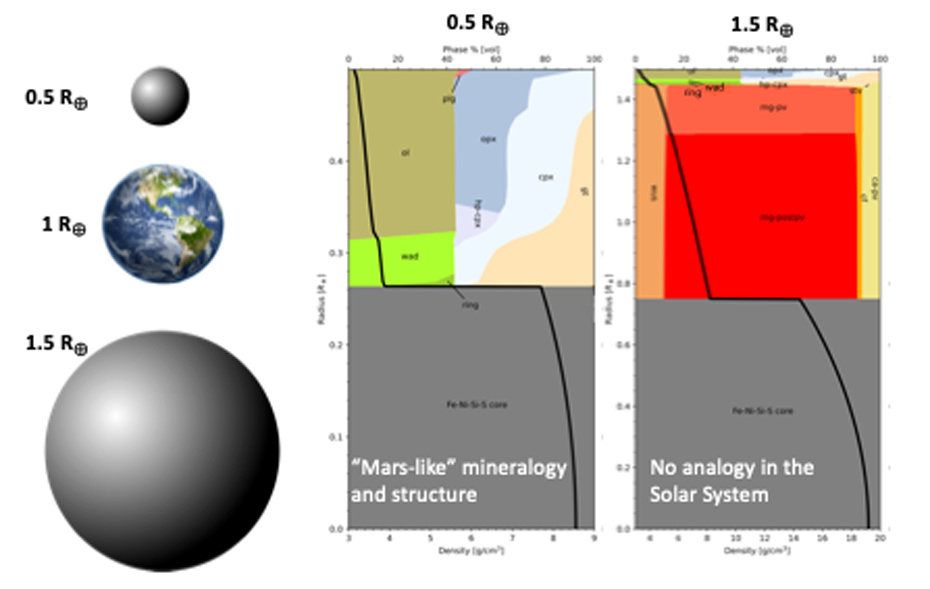From stellar abundances to planetary interiors
A major goal in the discovery and characterisation of exoplanets is to identify terrestrial- type worlds that are similar to (or otherwise distinct from) our Earth.
Recent results have highlighted the importance of applying devolatilization – i.e. depletion of volatiles – to the chemical composition of planet-hosting stars to constrain bulk composition and interiors of terrestrial-type exoplanets. In the recent external pagepublication by Wang et al. in MNRAS,call_made they apply such an approach to a selected sample of 13 planet-hosting Sun-like stars, for which high-precision photospheric abundances have already been determined.
With the resultant devolatilised stellar composition (i.e. the model planetary bulk composition) as well as other constraints including mass and radius, the team led by ETH colleagues, including Haiyang Wang, Sascha Quanz, and Fabian Seidler, modelled the detailed mineralogy and interior structure of hypothetical, habitable- zone terrestrial planets ("exo-Earths") around these stars. Model output shows that most of these exo-Earths are expected to have broadly Earth-like composition and interior structure, consistent with conclusions derived independently from analysis of polluted white dwarfs. Investigating their devolatilization model at its extremes as well as varying planetary mass and radius (within the terrestrial regime) reveals potential diversities in the interiors of terrestrial planets.
By considering (i) high-precision stellar abundances, (ii) devolatilization, and (iii) planetary mass and radius holistically, this work represents essential steps to explore the detailed mineralogy and interior structure of terrestrial-type exoplanets, which in turn are fundamental for our understanding of planetary dynamics and long-term evolution.
This work has been carried out within the framework of the National Centre of Competence in Research PlanetS supported by the Swiss National Science Foundation (SNSF). It is the third major publication yielded from the framework’s external pageProject 4.2-WP3: From stellar abundances to planetary interiors.call_made
Free access to this work on external pagearXivcall_made.


